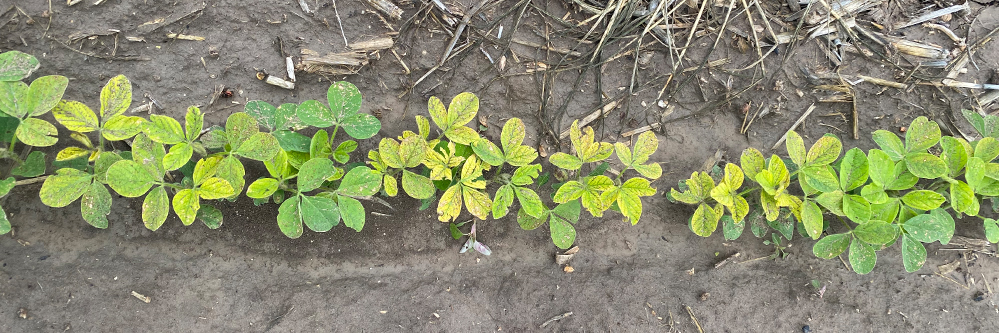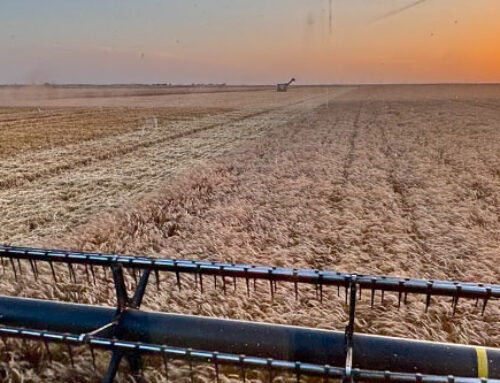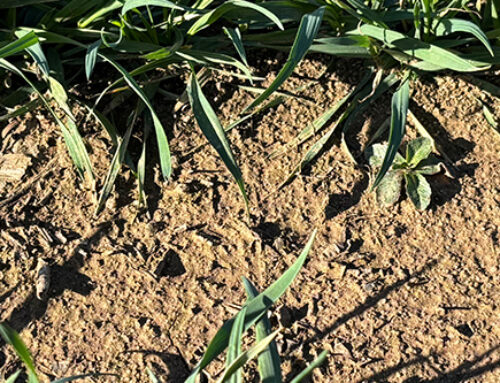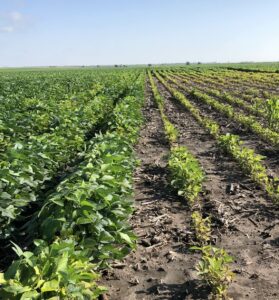
At-planting EDDHA Chelated Iron treatment vs check with no Iron added shows dramatic results in severely deficient soils.
Iron Deficiency Chlorosis (IDC) in soybeans is a significant concern for soybean growers, as it can lead to substantial yield losses. This physiological disorder is characterized by the inability of soybean plants to uptake sufficient iron from the soil, resulting in chlorosis, or yellowing, between the leaf veins. Iron chlorosis is particularly problematic in high pH soils with high levels of calcium carbonate, which neutralize the acids released by soybean roots intended to solubilize soil iron. Symptoms typically manifest first in the youngest leaves, with the older trifoliolate leaves remaining green.
Managing IDC
Management of IDC involves a multi-faceted approach focused on variety selection, soil management, and cultural practices. Selecting soybean varieties with tolerance to IDC is the primary strategy.
Research indicates that varieties tolerant to IDC can significantly outperform susceptible ones under pressure from IDC, especially when combined with specific treatments aimed at reducing the severity of IDC symptoms.
The use of a companion crop, such as oats or rapeseed before soybean planting, has shown promise in increasing soybean grain yield in areas affected by IDC. The companion crop can uptake excess soil nitrate, potentially reducing IDC severity. Higher seeding densities of soybeans are also recommended, as increased plant density can enhance the availability of iron in the root zone.
Soil management practices, including adjusting nitrate levels and addressing soil compaction, are critical. Lower oxygen levels in compacted soils can reduce IDC severity by decreasing soil nitrate levels. Other practices of adding Chelated EDDHA Iron, magnesium sulfate, ammonia sulfate, potassium sulfate humates, and fulvic acid have also shown a positive improvement in promoting better soil health in those IDC areas of the fields.
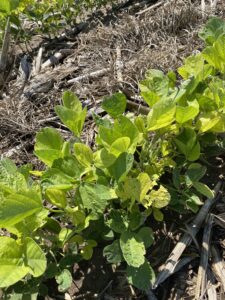
Soybeans exhibiting yellowing leaves and slow, stunted growth due to iron deficiency.
You can pinpoint areas where IDC is prevalent by conducting site-specific soil sampling or grid sampling to detect carbonates and soluble salts. Some growers utilize 1 acre or 2.5 acre grid sampling to help identify the high calcium carbonate areas of the field.
In summary, managing IDC in soybeans requires an integrated approach that includes selecting IDC-tolerant varieties, employing soil and crop management strategies to mitigate risk factors, and maintaining vigilant scouting practices to identify and address IDC symptoms early. By understanding the underlying causes of IDC and implementing these management practices, growers can significantly reduce the impact of this disorder on soybean yields.
We are here to help on managing iron chlorosis and your other agronomy needs.
For more detailed information, contact your Crop Quest Agronomist.
